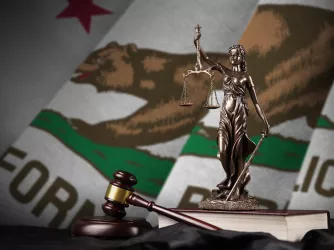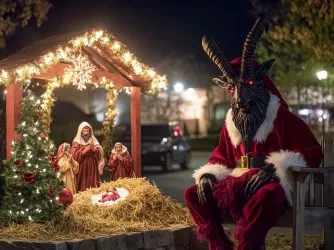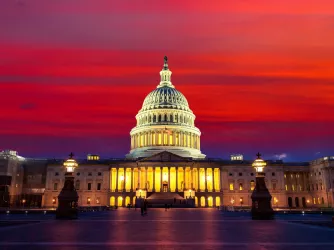Table of Contents
Answering a call for speech codes from The Washington Post

On Wednesday, a staff editorial in The Washington Post aimed to explain how colleges can “stop racism from winning on college campuses.” The piece was prompted by American University’s response to recent racist activity on campus — for example, “a half-dozen pairs of bananas, their skins scrawled with toxic messages, were found hanging from black string nooses just after dawn early last week” — now under federal investigation. The Post’s editorial board praised American’s reaction, and suggested that the school’s “smart, proactive agenda… might serve as a blueprint for other universities facing similar problems.”
But one of the editorial board’s suggestions — that schools “make crystal clear that racist signs, symbols and speech are off-limits” — is foreclosed by the First Amendment at public colleges and by the foundational tenets of free expression at private colleges that promise their students expressive rights. As The Washington Post’s own Eugene Volokh explained at necessary length yesterday, the suggestion is an “awful idea.”
Volokh — who, in addition to being a Post blogger, is a law professor at UCLA School of Law and a noted First Amendment scholar — directs the editorial board’s attention to the long list of legal defeats for campus speech codes intended to prohibit racist expression:
Lower courts have consistently struck down campus speech codes aimed at supposedly bigoted speech. See, e.g., Dambrot v. Central Michigan Univ., 55 F.3d 1177, 1184-85 (6th Cir. 1995); DeJohn v. Temple Univ., 537 F.3d 301, 316-17, 320 (3d Cir. 2008); McCauley v. Univ. of V.I., 618 F.3d 232, 237-38, 250 (3d Cir. 2010); Iota Xi Chapter of Sigma Chi Fraternity v. George Mason Univ., 993 F.3d 386, 388-89, 391, 393 (4th Cir. 1993); College Republicans v. Reed, 523 F. Supp. 2d 1005, 1010-11, 1021 (N.D. Cal. 2007); Roberts v. Haragan, 346 F. Supp. 2d 853, 870-72 (N.D. Tex. 2004); Bair v. Shippensburg Univ., 280 F. Supp. 2d 357, 373 (M.D. Pa. 2003); Booher v. Bd. of Regents of N. Ky. Univ., 1998 U.S. Dist. LEXIS 11404, *28-*31 (E.D. Ky. 1998); UWM Post, Inc. v. Regents, 774 F. Supp. 1163, 1165-66, 1173, 1177 (E.D. Wis. 1991); Doe v. Univ. of Mich., 721 F. Supp. 852, 856, 864-66 (E.D. Mich. 1989). And in Christian Legal Society v. Martinez (2010), the Court gave students’ freedom to “express any viewpoint they wish — including a discriminatory one” as an example of “this Court’s tradition of protect[ing] the freedom to express the thought that we hate” (quotation marks omitted). There is no First Amendment exception for “hate speech” or “racist signs, symbols and speech.”
Volokh’s right. And it is important to note that “racist signs, symbols and speech” may be appropriated or recontextualized in service of other (and even opposing) political points; under the broad ban proposed by the Post, protesting Attorney General Jeff Sessions by satirically wearing Ku Klux Klan robes would be forbidden. As the Supreme Court observed in Virginia v. Black (2003): “The act of burning a cross may mean that a person is engaging in constitutionally proscribable intimidation. But that same act may mean only that the person is engaged in core political speech.” Broad bans fail to distinguish between the two.
Volokh further explains that a ban on all “racist” speech would not only prohibit a vast amount of core political expression and debate, but would functionally serve to chill speech that university administrators simply disliked:
Some such advocacy may be motivated by racial or ethnic hostility, while some might not be; but all such advocacy that runs against university administrators’ political views would be deterred when “university administrators” “make crystal clear” that “racist … speech” — racist in the views of whatever disciplinary committee is making decisions — is “off-limits.”
In addition to the fact that the Post’s proposal would be unconstitutional, illiberal, inherently subjective, and ripe for abuse, it’s worth noting two further points in opposition.
First, colleges and universities that accept federal funding are already bound by Title VI of the Civil Rights Act of 1964 to address discriminatory harassment on the basis of race, color, or national origin. In other words, colleges must already prohibit and address racist conduct that is so severe, pervasive, and objectively offensive that it prevents a reasonable student from obtaining his or her education. Importantly, this obligation does not mean colleges must restrict expressive rights. Indeed, Title VI and other federal anti-discrimination laws governing colleges and universities “do not require or prescribe speech, conduct or harassment codes that impair the exercise of rights protected under the First Amendment.” (For further discussion of the intersection between the First Amendment and federal anti-discrimination laws, see my colleague Azhar Majeed’s legal scholarship.)
Second, if the aim is to actually address racism — not just hide it — a broad ban on racist speech is likely to be both ineffective and counterproductive. As FIRE President and CEO Greg Lukianoff wrote a few years back, banning hate speech is “like taking Xanax for syphilis”: “You may briefly feel better about your horrible disease, but your sickness will only get worse.” As Greg explained,
Simply making bigoted speech illegal results in two distortions of reality. First, it can create an overly rosy picture of public sentiment, thus preventing real and festering social problems from being addressed. Or second, paradoxically, it may lead people to believe that they live in a far less tolerant society than they actually do. John L. Jackson, an anthropology professor at the University of Pennsylvania, teased out this idea in his 2008 book “Racial Paranoia: The Unintended Consequences of Political Correctness.” Jackson argues that if a minority group believes that only the threats of formal or informal punishments are preventing people from constantly shouting racial slurs at the top of their lungs, the minority may conclude that those other people are far more hateful and bigoted than they may, in fact, be. In this way, attempts to police hateful or hurtful speech may be making people more paranoid than they need to be about the feelings most people actually hold in their hearts.
The only lasting fix to the real problem of racism or anti-Semitism is cultural. A necessarily incomplete attempt to suppress bigotry may well have far worse unintended consequences, as legal regimes that try to ban hate speech drive social resentments underground, thus preventing the right allocation of resources to address social problems openly.
Censors are often motivated by good intentions, and the First Amendment’s protections are perhaps at their most vulnerable in the wake of speech or conduct that is gravely offensive to a majority of us. Accordingly, however, that’s when the defense of free expression is most vital — a point The Washington Post’s editorial board should understand. Its call for speech codes is unhelpful and should be reconsidered.
Recent Articles
FIRE’s award-winning Newsdesk covers the free speech news you need to stay informed.

One day after FIRE lawsuit, Congress passes changes to filming permits in national parks

VICTORY: FIRE lawsuit leads California to halt law penalizing reporters, advocates, and victims who discuss publicly known information about sealed arrest records

O holy fight: New Hampshire Satanic Temple statue threatened by more than vandals
